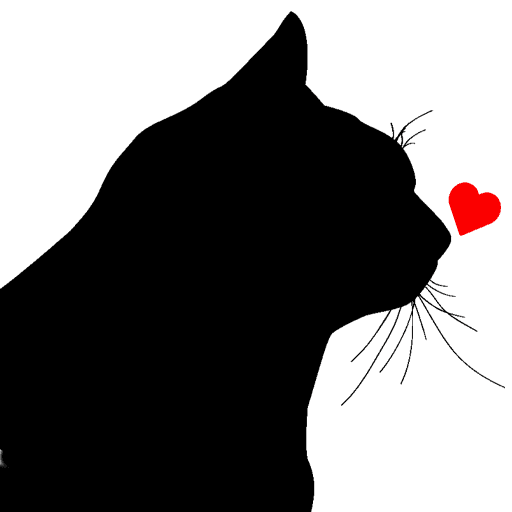Pumpkin is a popular ingredient in many pet foods. And, if you’re a pet owner, you’ve probably heard that it can help with different digestive issues in cats. But does it have any benefits for our feline friends? This post will explore everything you need about whether pumpkins help cats with diarrhea.
Table of Contents
- Why Use Pumpkin for Cats with Diarrhea?
- How to Administer Pumpkin for Cats with Diarrhea?
- The Other Benefits of Feeding Pumpkin to Cats
- What Are the Risks of Pumpkin for Cats?
- Other Home Remedies for Cats with Diarrhea
- Conclusion
Why Use Pumpkin for Cats with Diarrhea?
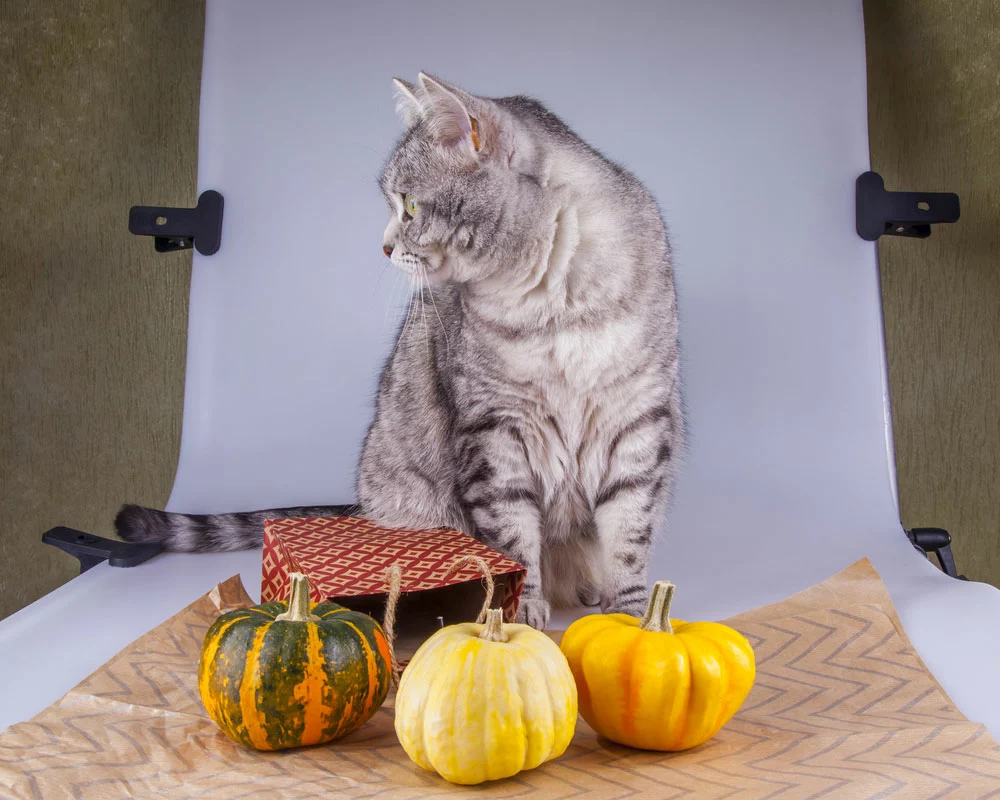
A grey tabby cat pauses for a photo with decorative pumpkins.
Great Source of Vitamins
Pumpkin is rich in Vitamins A and C, which are excellent sources of antioxidants and a robust immune system. While your vet will prescribe treatment for your feline, a robust immune system will help your cat combat the infection faster.
High Fiber Content
Pumpkin is high in fiber content, which helps manage constipation. Fiber absorbs water and fluids from undigested food, helping solidify your cat’s watery stool.
Contains Zinc
By feeding your cat pumpkin, you’re giving it high amounts of zinc mineral. Zinc helps support the intestinal barrier gut microbiome. Zinc deficiency can shift this microbiome, causing diarrhea and intestinal inflammation.
How to Administer Pumpkin for Cats with Diarrhea?
Plain Canned Pumpkin
While pumpkin is available in different forms, canned pumpkin will help manage your cat’s diarrhea effectively. Use plain pureed pumpkin, not canned pumpkin pie filling, for the best results. Canned pumpkin pie filling is high in sugar and flavorings and might sicken your cat.
Mix Pumpkin With Cat Food
To feed your cat pumpkin, mix it with cat food. Pumpkin is a diet supplement; don’t substitute it with cat food. Instead, mix up to 4 teaspoons of pumpkin with cat food and feed your cat – up to two times daily.
Try Alternative Fiber Supplements
Not all cats are the same: If your cat doesn’t like the taste of pumpkin, feel free to try alternative fiber supplements to help manage diarrhea. For example, wheat bran, butternut squash, and psyllium all work like pumpkins to help control watery stool in felines. More information about this is further down in the article.
The Other Benefits of Feeding Pumpkin to Cats
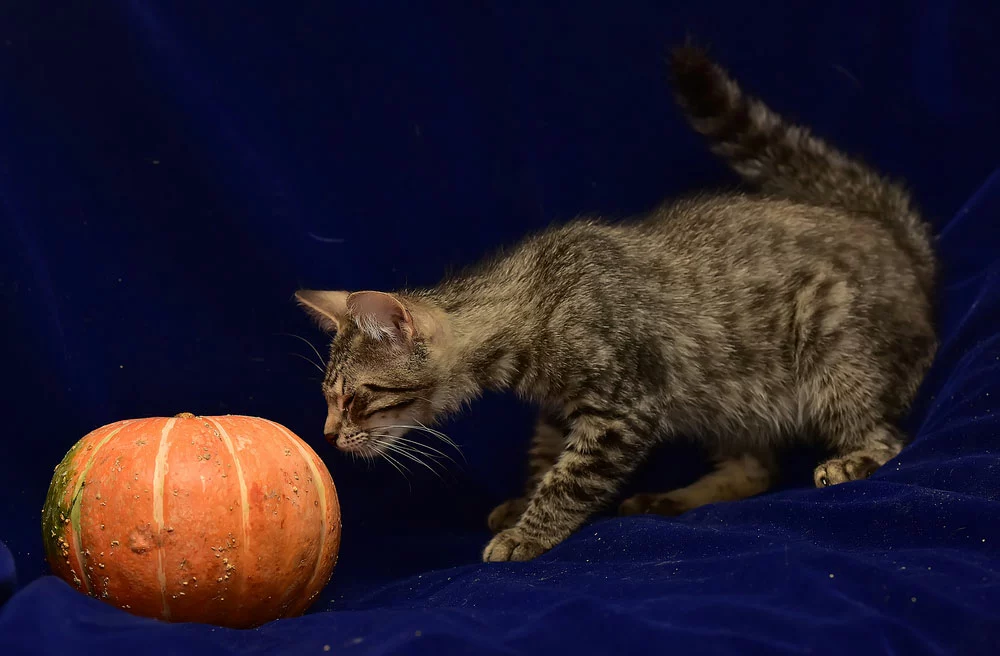
A stripped kitten and a pumpkin are in front.
Constipation
Pumpkin relieves constipation in cats. That’s because it has high fiber content that moves food faster in the gut. The faster food moves through the digestive system, the less time water is absorbed from it. Consequently, this results in healthy stool that is neither hard nor soft, making it move out effortlessly.
Weight Loss
Pumpkin helps obese or overweight cats lose weight. The fiber in pumpkin adds bulk and density to the diet, making the cat stay fuller for longer. That helps suppress your cat’s appetite so it doesn’t eat as often. If you feed your cat pumpkin over an extended period, it will lose weight gradually and healthily.
Reduction of Hairballs
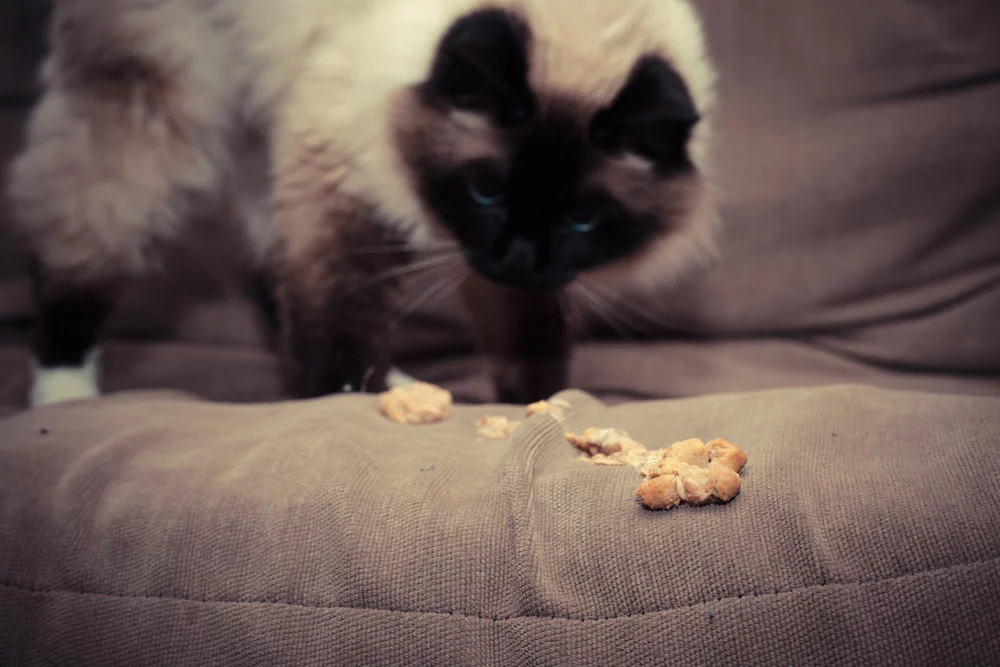
A cat is throwing up a furball on a couch.
Pumpkins can help reduce hairball formation in cats. That’s because of its high fiber content, which binds onto undigested hairballs in the digested tract. The process helps pull the hairballs into the stool, eliminating them from the body.
Improved Skin & Coat
Thanks to its high zinc content, pumpkin can boost the health of your cat’s skin and coat. Zinc keeps cell walls in the skin stable, promoting skin health. Plus, it’s rich in antioxidants, which can prevent skin conditions, including inflammation. Additionally, zinc aids hair growth and repair and is responsible for a healthy coat. Pumpkin seeds have the highest zinc content – roast and grind them before letting your cat eat them.
What Are the Risks of Pumpkin for Cats?
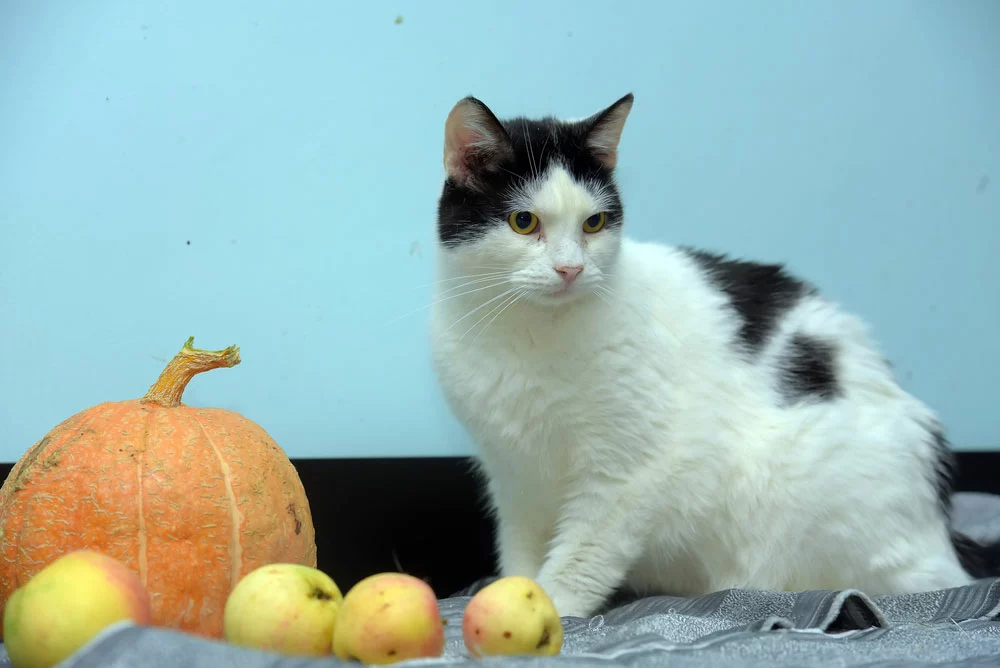
A cat and a pumpkin.
Below, I’ve listed the parts of pumpkin you should not feed your cat – and their potential risks to cats.
- Pumpkin stem is prickly and might damage your cat’s digestive tract.
- Pumpkin skin is tough to digest, which can cause nausea and vomiting.
- Raw pumpkin isn’t easily digestible, leading to gut discomfort.
- Canned pumpkin pie filling contains additives (spices, sugar, etc.), which could harm your feline.
- Old Jack-O-Lanterns don’t easily rot and may have harmful pathogens that could sicken your cat.
- Out-of-date (expired) canned pumpkins could compromise your cat’s health. Don’t let the canned pumpkin sit in the fridge for more than a week before your cat consumes it.
Other Home Remedies for Cats with Diarrhea
Does Pumpkin Help Cats with Diarrhea: Wheat Bran
Wheat bran, like pumpkin, has high fiber content. Consequently, it absorbs water in the gut while firming your cat’s poop. Mix half a teaspoon of wheat bran with cat food for effective results.
Does Pumpkin Help Cats with Diarrhea: Psyllium
While it’s a laxative, psyllium works similarly to pumpkin, absorbing water in undigested food. It helps to harden your cat’s poop, managing diarrhea.
Does Pumpkin Help Cats with Diarrhea: Butternut Squash
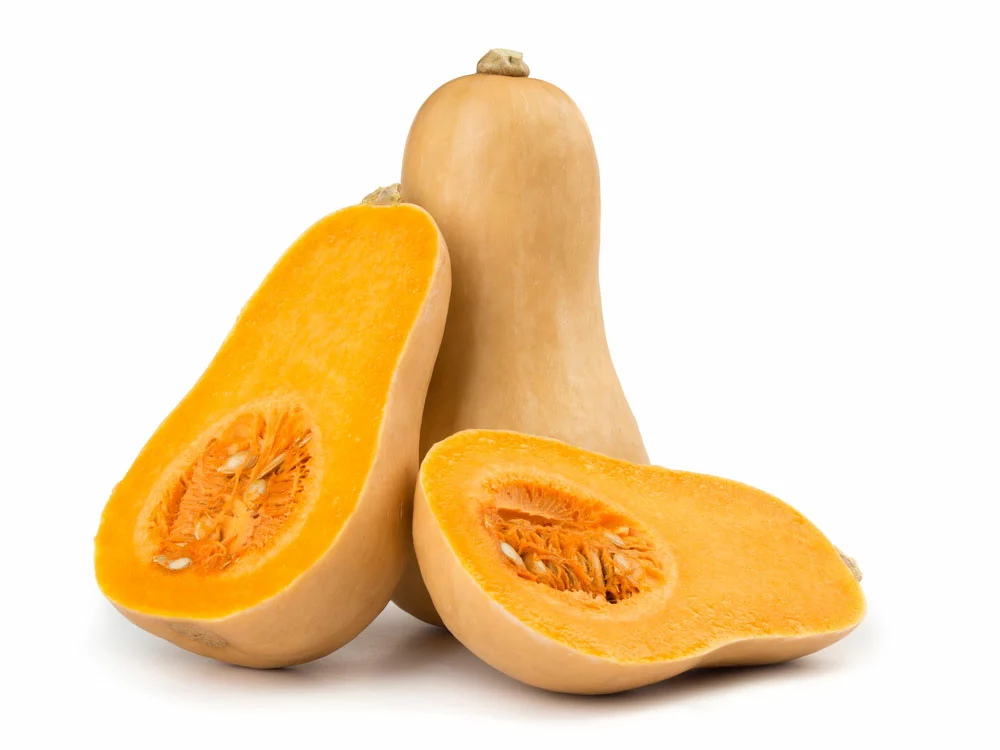
Butternut squash.
It has almost all the nutrients available in pumpkin and works more or less like pumpkin as far as managing a cat’s diarrhea goes. Roast butternut squash before mashing it into pulp, then add up to 2 teaspoons of it to cat food.
Does Pumpkin Help Cats with Diarrhea: Boiled Chicken
Plain, boiled chicken can boost the health of your cat’s digestive system. Also, remove the bones from the boiled chicken before giving it to your feline. Next, to bulk out the meal, add boiled rice or pasta to it.
Conclusion
Pumpkin is high in fiber and helps to absorb excess water in the intestines, hardening watery stools in cats. Contact us today for more information on whether pumpkins can help cats with diarrhea.
